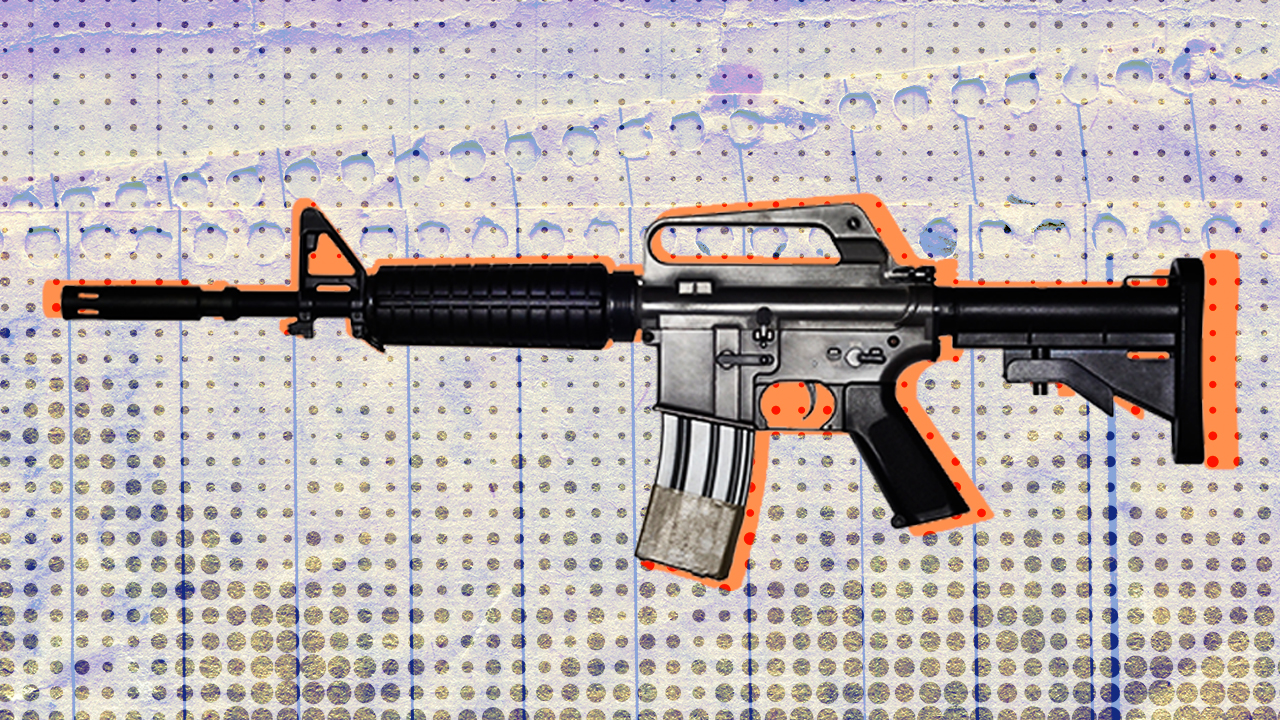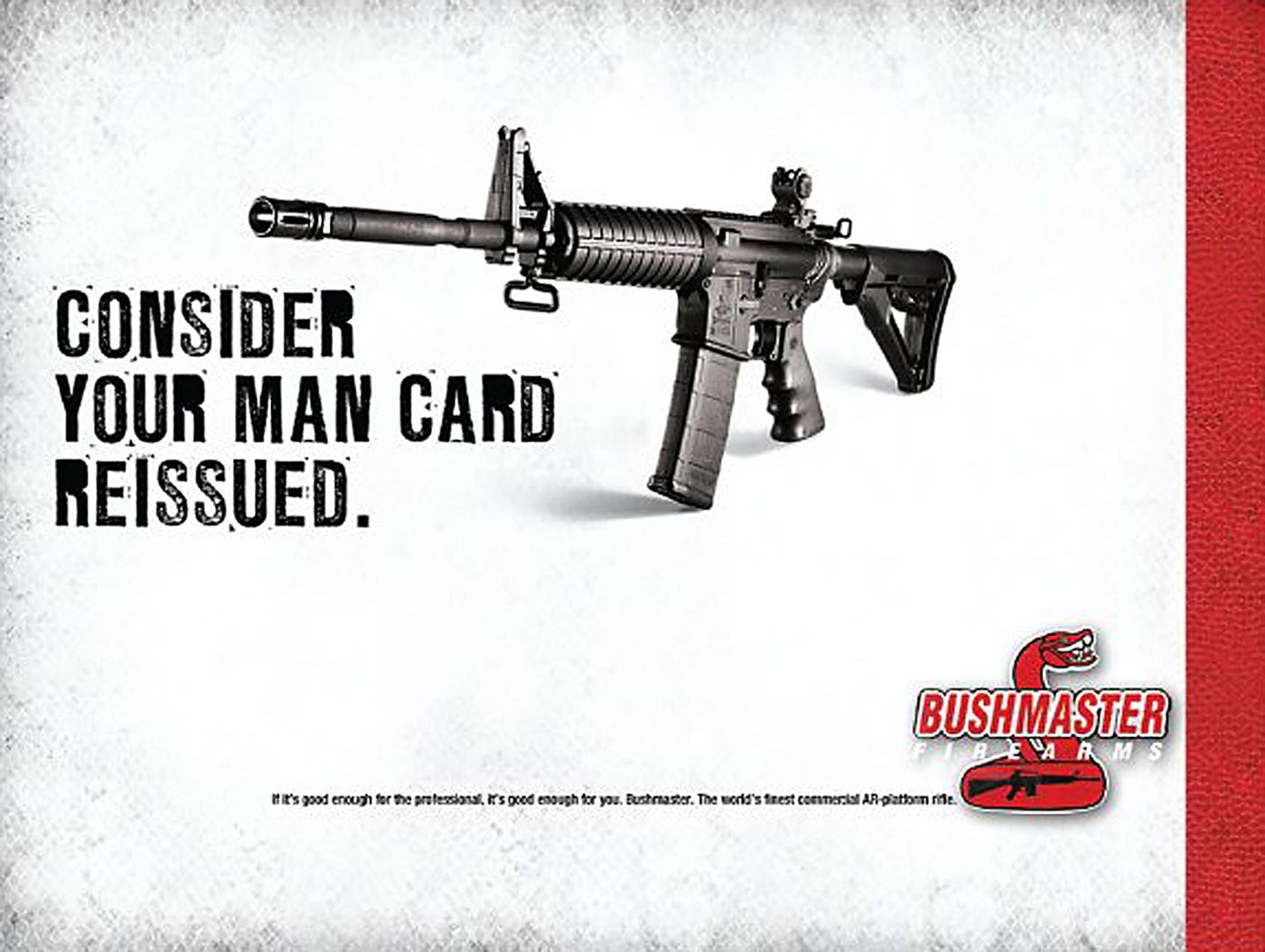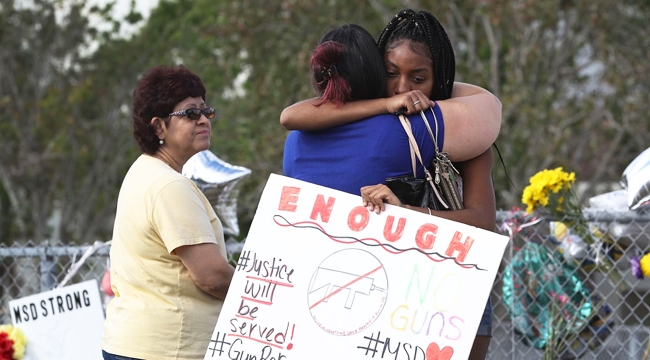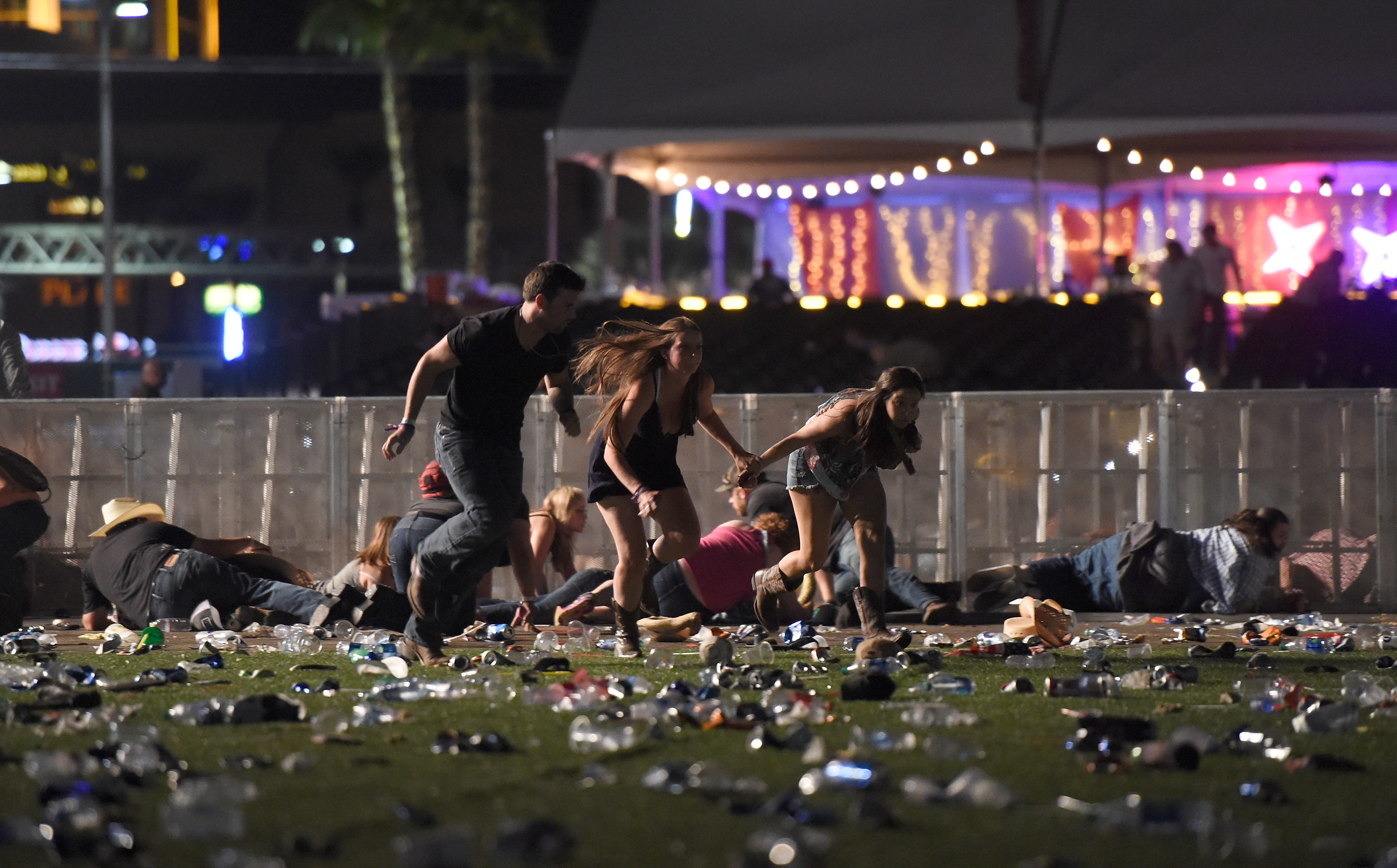
I.
It’s time to stop thinking of the AR-15 like a regular gun. Treated as such, it’s unextraordinary. It’s lightweight and fires similarly lightweight ammunition. The kinetic energy it delivers per round is about half of a standard hunting rifle.
But no one looks at the AR-15 like a regular gun. Its aesthetics, the way it’s marketed, and how its high-velocity rounds become unstable upon impact, turning flesh to pulp, all conspire to make that fact perfectly clear. If you want to discuss the firearm honestly, you have to call it what it really is: a harbinger of cataclysm; the beloved plaything of mass killers; the domestic terrorist’s weapon of choice.
That’s where the military-style assault rifle debate belongs. Not being compared to shotguns, hunting rifles, or your grandpa’s old pistol, but in a separate category with the other preferred tools of anyone hoping to fatally injure great swaths of people — bombs, poison, and commandeered vehicles. When looked at through this lens, the case against the AR-15 (and similar rifles) is open and shut.
II.
If the idea of categorizing the AR-15 and other military-style assault rifles as terrorist weapons sounds extreme, know that this assessment is absolutely supported by data. A version of the AR was with James Holmes in Aurora, Omar Mateen at Pulse Nightclub, and Adam Lanza at Sandy Hook. The San Bernadino shooters had them. So did the shooter in Sutherland Springs. There was one at the Pittsburgh Synagogue and one at Stoneman Douglas. And there were 22 AR-style weapons recovered from Stephen Paddock’s Las Vegas hotel room, plus another nine back at his house.
Those killings weren’t simply “gun deaths.” Even “mass shootings” is too nebulous a term. They were large-scale catastrophes and acts of domestic terrorism. And the AR-15 was at the center of them all. Its history of decimating the innocent is peerless, making the gun the most powerful over-the-counter killing machine in human history regardless of its projectile velocity. The message it transmits — to lonely men, boiling with rage — is so undeniable that even Second Amendment absolutists seem to recognize the force of its symbolism.
“It’s really just a perception thing,” master gun instructor Dean Hazen told USA Today about the AR-15, just after Stoneman Douglas. “There are rifles that are more powerful and more dangerous than that, but they’re not being used.”

III.
Whenever the topic of an “assault rifle ban” comes up, the preferred tactic of the opposition is to argue semantics. It’s a very specific brand of semantic argument, too, where anyone challenging the right of civilians to buy a particular category of guns had better be a certified ballistic expert. If you dare discuss this type of weapon without technical precision — simply because you don’t like how bullets fired from its muzzle have chewed through the flesh of children at schools across the country — expect to hear the following:
Semi-automatic? Most handguns are semi-automatic. Besides, the AR-15 actually has less power than a standard hunting rifle. A real assault rifle is fully automatic, and those are already banned. Also, do you even know what a barrel shroud is? Or that the ‘AR’ in the name AR-15 doesn’t stand for ‘Assault Rifle’? It actually stands for Armalite.
These little snippets of trivia delivered in the tone of Napolean Dynamite insulting his llama are simply meant to distract. They’re speed bumps that impede serious conversation about a gun-type that’s preferred by mass shooters from sea to shining sea.
Which is not to suggest that there’s no need to strictly define the sorts of weapons in a theorized assault rifle ban. Parkland survivor Emma González, writing in Teen Vogue, readily called out the need for using concrete terms:
It would also benefit us to redefine what assault weapons are so that when we call for a ban against them, it’s clear that we aren’t trying to ban all guns. No one needs to use an assault weapon to protect themselves while walking home at night. No one should be allowed to use an AR-15 to strategically hunt people, which, in case anyone forgot, is what made us speak out in the first place.
González links to an article that goes into further specifics, with Senator Dianne Feinstein’s 2017 (now 2019) Assault Weapon Ban Bill as its baseline. This proves a little sticky, as Feinstein’s bill has itself been gunsplained by Second Amendment absolutists (the NRA obviously included). An article on Reason.com last week, with the title: “The Whimsical Illogic of ‘Assault Weapon’ Bans,” skewered the bill’s focus on guns with barrel shrouds, forward facing clips, and threaded barrels. Its subheading read: “The category is defined by politicians, who focus on looks rather than function.”
In truth, the AR-15 and military-style weapons like it are actually quite simple to categorize. Just use the famous line that Justice Potter Stewart offered in 1964 (Jacobellis v. Ohio), speaking on the definition of hard-core pornography: “I know it when I see it.” It’s not simply about barrel shrouds or forward facing grips or even high-capacity magazines. It’s about a weapon that’s modeled on the tremendous killing power of fully automatic military-grade rifles. Guns which are designed to decimate entire crowds of human beings without an ounce of hesitation.

IV.
“Why don’t you want to ban handguns?” Ben Shapiro asked Piers Morgan on CNN in 2013. “If you really wanted to solve the ‘gun violence problem in America’ why not ban all the guns?… Most of the murders are committed with those weapons.”
There’s some truth here. Handgun deaths vastly outpace rifle deaths (before and after accounting for suicides) and death by an assault rifle, though tough to measure thanks to NRA impediments, is an even smaller percentage of the whole. If the goal of gun control proponents was simply “less gun death,” it would make perfect sense to zero in on handguns. By framing the conversation in this way, Shapiro has given himself a ready-made checkmate. Handguns cause the most deaths and no one has any serious designs on banning them at this point in history. It’s a slam dunk.
But the idea behind banning the AR-15 is truly separate from talk of pistols or even hunting rifles. The goal is not simply to decrease the number of gun deaths in the country, it’s to decrease (even marginally) the chances of a mass tragedy — another Sandy Hook or Las Vegas or Pulse or San Bernadino. An Assault Rifle ban is about mitigating the risk for the sort of cataclysm that permeates every pore of our society and causes our citizens to live in fear. It’s about taking a toy away from everyone because a few bad apples choose to use it wrong (something our society literally does all the time with toys). And because the weapon is indeed treated like a toy by its makers — a “platform-based” erector set that’s infinitely permutable — there’s no reason not to throw the baby out with the poisoned bathwater.
It’s like banning M80s because too many kids blew their thumbs off. Something which the Federal Government absolutely did, decades ago.
V.
“Like most rights, the Second Amendment right is not unlimited.”
So reads the US Supreme Court decision District of Colombia v. Heller, authored by Justice Antonin Scalia. He continues: “It is not a right to keep and carry any weapon whatsoever in any manner whatsoever and for whatever purpose.”
Scalia was very much pro-gun. The case in question overturned a D.C. handgun ban and trigger lock requirement. But his opinion ceded ground, too, leaving the door open for speculation on the potential limitations of the Second Amendment. Since the last Federal Assault Weapon Ban expired in 2004, California, Connecticut, Maryland, Massachusets, New York, and the District of Colombia all have signed laws banning assault weapons. On January 1, Washington state’s ban of anyone under 21 buying assault rifles went into effect. On January 22nd, Illinois lawmakers introduced a comprehensive assault rifle ban to the state Senate.
Though each state classifies its definition of “assault rifle” differently, the AR-15 falls under the ban in all cases. California, Connecticut, and Illinois call out the weapon by name.
Will these pieces of legislation work? In lowering the overall amount of gun violence in America, almost certainly not. If you frame the debate incorrectly and expect it to decrease all gun violence, the data won’t favor you. But will it decrease the number (and death toll) of mass shootings and domestic terrorist events? Almost certainly, a claim which is well supported by research and data. Just as the 1994-2004 Federal Assault Weapons Ban did. Just as Australia’s Assault Weapons Ban has.

VI.
America is not wild about death, but we tolerate it. If our goal was always to protect the most human lives, we’d focus our efforts on heart disease and diabetes and allocate far less to terrorism, which (statistically speaking) is an anomaly. But Americans hate unforeseeable, headline-grabbing tragedies. We despise cataclysm.
This is natural. Scores of kids dying violent deaths all at once puts a different emotional load on the collective psyche than ten times as many high school students dying in car wrecks over the course of a year. Like anthrax in envelopes or bombs in packages, mass shooters create a level of fear that we have collectively deemed intolerable. And they most-often do so with an AR-15 in hand.
To ban this weapon and its closest relatives — all symbols of destruction and death — is to recognize assault rifles for what they really are: Cheap, light, customizable toys, that are able to shred the flesh of our citizens with tremendous speed and efficiency. Devices of terror that society has no practical use for.
